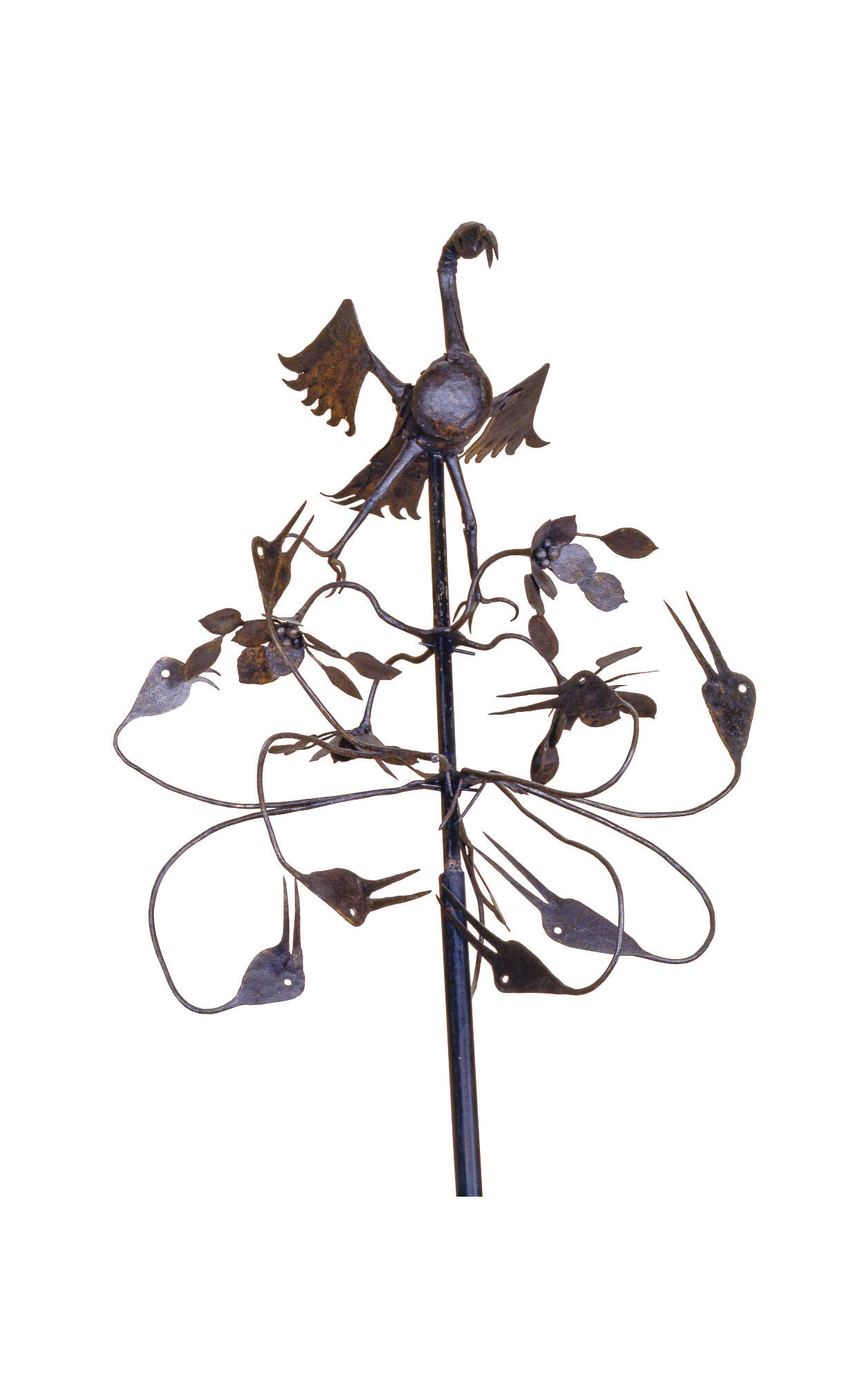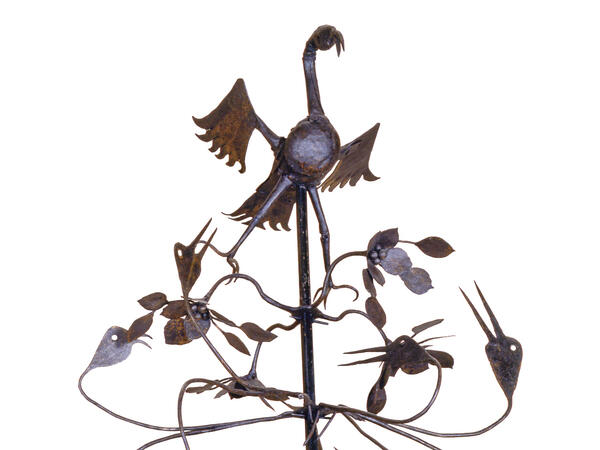Old Moscow is unimaginable without the semicircle fortress wall of Kitay-Gorod. It was erected to protect the posad population from enemy invasions in 1535-1538 — during the reign of Grand Duchess Elena Glinskaya, the widow of Vasily III and mother of young Ivan IV. In the 1680s, when Moscow fortifications were renovated and repaired, some of the towers of Kitay-Gorod were topped by tall tented roofs and covered with green tiles. Two towers — Nikolskaya and Varvarskaya — were decorated with bird-shaped weathervanes.
The gilded and painted weathervanes served as the decoration of the city. They were probably made by the blacksmiths from the palace workshops. The material was boiler plate — as thick sheet metal was called in the olden days, which was the raw material for window sills, iron doors and roofing elements. It was first produced in Russia in the 15th century, when the first metallurgical works appeared under the supervision of the Italian engineer Aristotle Fioravanti.
It is difficult to say what kind of bird was placed on the weathervane of the Nikolskaya Tower. The master may have been inspired by different images he could see on the glazed tiles and white-stone carved reliefs of Moscow churches.
Historians also suggest that the master was inspired by the image of the pelican over the nest with his chicks. The motif of the pelican ripping open his chest to feed his chicks with his blood was established in church art as a symbol of the sacrifice of Christ on the cross. It could also symbolize mercy.
In 1934, when most of the northern and eastern walls of Kitay-Gorod were demolished, both weathervanes were saved by Nikolai Levinson, an employee of the Historical Museum and head of the metal group. The second wrought iron weathervane, which topped the low tent of the Varvarskaya Tower, is now housed in the Kolomenskoye Museum-Reserve.
The gilded and painted weathervanes served as the decoration of the city. They were probably made by the blacksmiths from the palace workshops. The material was boiler plate — as thick sheet metal was called in the olden days, which was the raw material for window sills, iron doors and roofing elements. It was first produced in Russia in the 15th century, when the first metallurgical works appeared under the supervision of the Italian engineer Aristotle Fioravanti.
It is difficult to say what kind of bird was placed on the weathervane of the Nikolskaya Tower. The master may have been inspired by different images he could see on the glazed tiles and white-stone carved reliefs of Moscow churches.
Historians also suggest that the master was inspired by the image of the pelican over the nest with his chicks. The motif of the pelican ripping open his chest to feed his chicks with his blood was established in church art as a symbol of the sacrifice of Christ on the cross. It could also symbolize mercy.
In 1934, when most of the northern and eastern walls of Kitay-Gorod were demolished, both weathervanes were saved by Nikolai Levinson, an employee of the Historical Museum and head of the metal group. The second wrought iron weathervane, which topped the low tent of the Varvarskaya Tower, is now housed in the Kolomenskoye Museum-Reserve.



